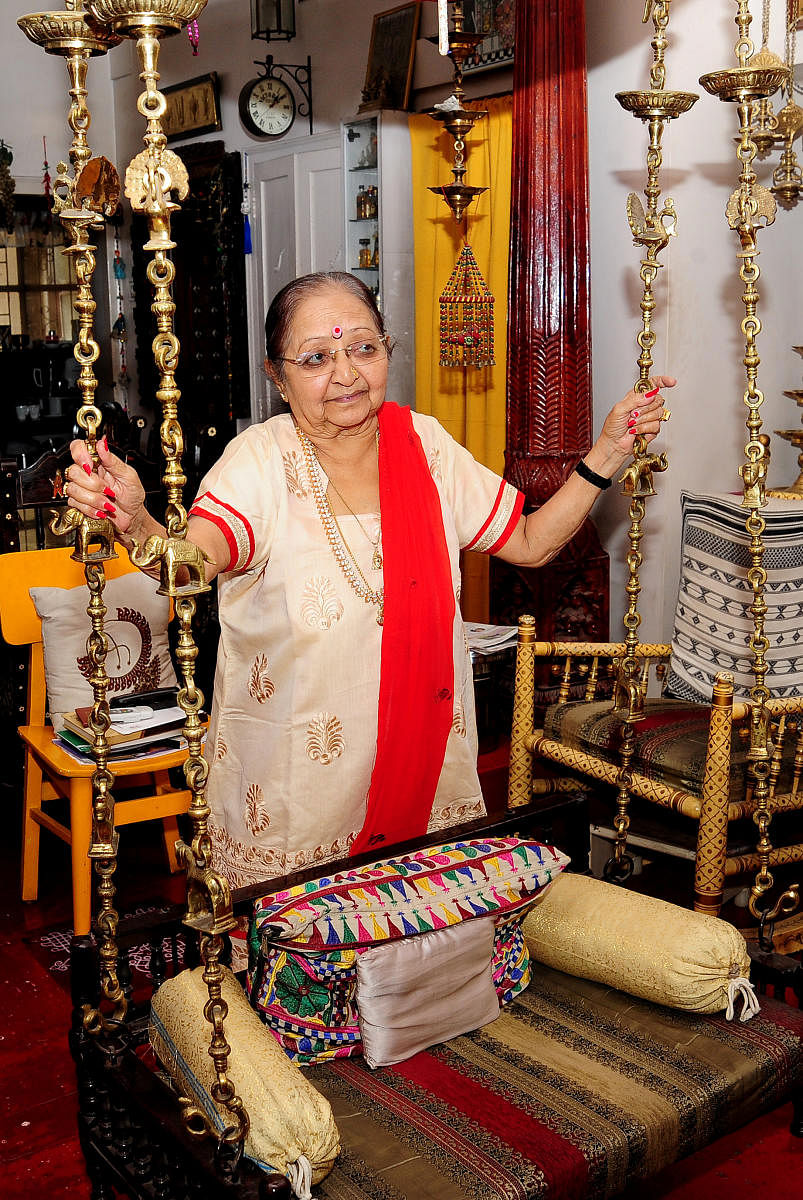
For radio listeners in the 1980s, Shyamala Bhave was a name synonymous with melodious music in a variety of genres; classical, semi-classical and sugama sangeeta.
Stepping into Saraswati Sangeeta Vidyalaya, the school that turned 90 recently, is like taking a journey back to the previous century. Surrounded by musical instruments, artefacts and mementoes, Shyamala would talk to students and guests, sitting across an image of Goddess Saraswati. Strategically located at Nehru Circle in Seshadripuram, the school helped the spread of Hindustani music in Bangalore, a stronghold of Carnatic music.
Shyamala’s paternal great-grandfather Pandit Vishnudas Bhave was a pioneer of Marathi theatre, an exceptionally gifted playwright and actor who was well-versed in music and puppetry. Her grandfather, Vithal Vishnu Bhave, was well-known for his painting and photography. Her father, Govind Vithal Bhave, was a disciple of Vishnu Digambar Paluskar, the doyen who introduced a notational system for the predominantly oral Hindustani music.
In fact, her father was one among the celebrated trio of Paluskar’s disciples, along with Narayana Rao Vyas and Omkarnath Thakur, who received extraordinary education in ragas, performances and notation. Govind Bhave trained his wife Lakshmi in classical music and together they established the music school in Bangalore in 1931 on Guru Paluskar’s insistence.
The music-couple travelled wide and performed to music lovers across the country. Incidentally, Sundari (Lakshmi’s maiden name) earned Mahatma Gandhi’s appreciation, performing in his presence at a huge gathering in Gadag during the freedom movement days.
Continuing this tradition of multiple skills, Saraswati Vidyalaya offered training in various forms of instrumental music. Shyamala received training in sitar, harmonium, jal-tarang and piano, apart from vocal music.
Proficient artiste
As a child, Shyamala absorbed every musical note in the air. Without really sitting down to learn music, she imbibed swara and laya and the compositions of the Gwalior gharana, as her father trained countless students of the Vidyalaya. Her mother made Shyamala’s learning interesting by intermingling it with play, thereby eliminating a sense of drudgery.
Carnatic music was a part of Shyamala’s syllabus at school where Vidwan B Doreswamy taught her veena and vocal music. The little girl served her blind guru with devotion, sweeping his house and fetching him food from a nearby restaurant.
Enriching atmosphere
D V Gundappa, Masti Venkatesha Iyengar and D R Bendre, all major poets of the Navodaya period in Kannada literature, were frequent visitors at Govinda Bhave’s home. He would compose music for their songs and Shyamala soon followed. Bendre would stay with the Bhaves whenever he visited Bangalore. He would assign a poem in the morning to young Shyamala for composing music, which she would keep ready by evening.
Her music creation for all of G V Iyer’s films in association with Balamuralikrishna, the legendary Carnatic vocalist, was a continuation of the same journey. In fact, Shyamala has composed countless bandishes. Her compositions also cover shlokas, bhajans, abhangs and devaranamas.
Shyamala started performing at the age of six and took to music composing as a teenager. “Music came naturally to me,” she shared. She recorded for 78 RPM records and hers was one of the first Kannada voices to be recorded on EP (Extended Play record), holding four songs, two on either side.
Shyamala’s ardent disciple, Vageesh Bhat, shared an interesting detail as to how, as a college student in Kundapura in the ‘70s, he would listen to Shyamala Bhave’s EP recording broadcast from AIR Dharwad. There were no radios at home then and people would flock to the eateries to listen to the radio and Shyamala’s popular songs like Daya Maado Ranga and Sharanu Siddhi Vinayaka held the youngsters in thrall.
Shyamala toured the USA 33 times and visited every major country, except Russia and China, for music concerts. She once had the opportunity to perform before the legendary Hollywood actress Elizabeth Taylor who was all appreciation for her music. She even took Shyamala on an aerial tour of Hollywood in her helicopter.
Called ‘Ubhayagaana Vidushi’ for her proficiency in two classical forms, Shyamala could switch from one to the other effortlessly, handling a Hindustani-Carnatic jugalbandi single-handedly.
The title was given to her by her father’s close friend Sir M Visvesvaraya, the then Dewan of Mysore. Shyamala recollected that she had once visited D V Gundappa’s house with her mother. Listening to Shyamala’s rendering of Vataapi Ganapathim in Raga Hamsadhwani and a Hindustani composition in Raga Kalyan, DVG had remarked that she would shine like M S Subbulakshmi.